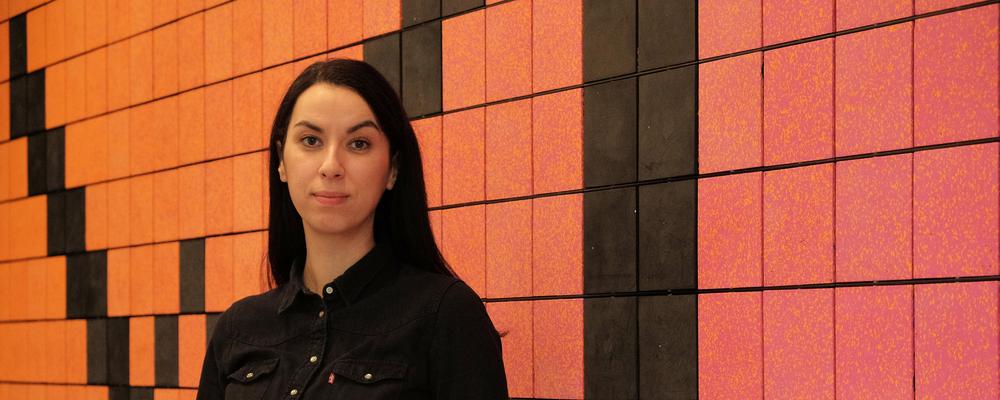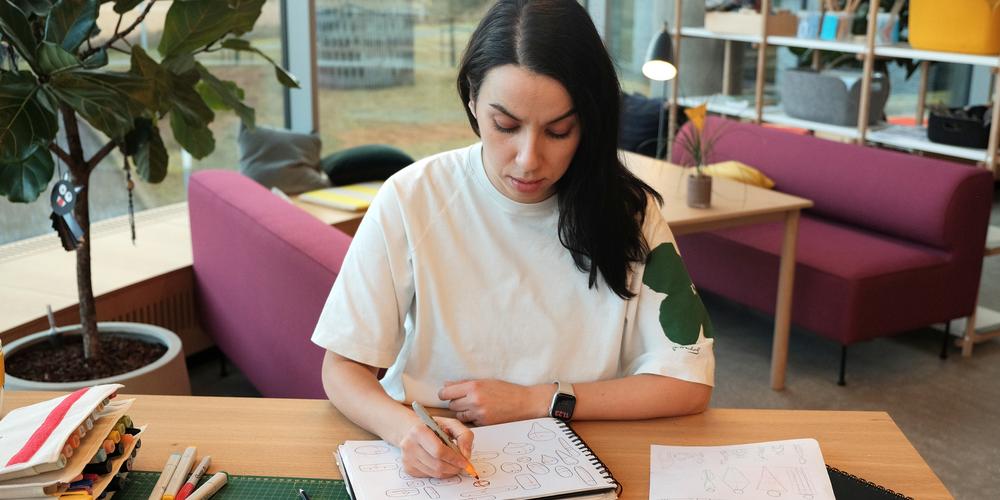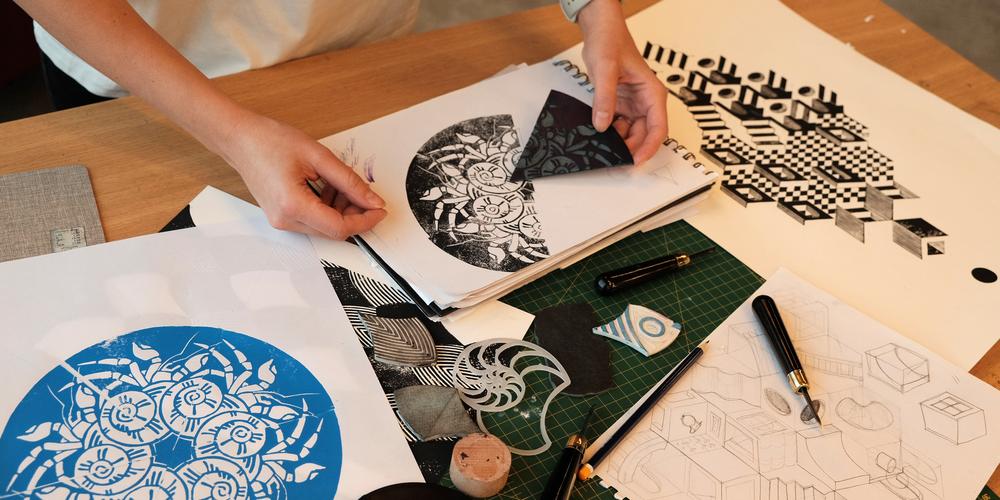
- Home
- News and events
- Find news
- Radost has never doubted her choice - to design for children's play
Radost has never doubted her choice - to design for children's play
Since she was twelve years old, Radost Kerefeyna has dreamt of creating things for children to play with. Ten years after graduating from the HDK-Valand master's programme in Child Culture Design, she is an established designer at the world's largest toy company – Danish LEGO.
When asked if she played much with LEGO as a child, Radost Kerefeyna is honest when she answers, 'No, not particularly much'. She explains that the small, colourful plastic pieces, which are immensely popular in Scandinavia, simply were not common in Bulgaria where she grew up.
“I only had one set; I don't remember which. But the pieces were pink, purple, and white, and I used them mostly to create floor plans and fantasise about how we would decorate the house my dad was designing for us”, she says.
Now, Radost works as a Senior Concept Designer at The LEGO Groups office in Billund. She has been there for nine years, starting just one year after completing her master’s degree at HDK-Valand. During that time, she also lived briefly in Norway, working with her husband in a stop-motion studio.
“It was fun and quite relaxing after two years of intensive studies. But after a while I started to miss design, and to continue with what I really wanted to do”, she says.

In fact, Radost decided to become a toy designer a long time ago. She reveals that in the Bulgarian school system, one can choose a specialisation as early as seventh grade, and she chose design and crafts.
“At my school, there was even a small group where we specialised in toys. I thought it would be so cool to learn how to make toys, especially at that age when I was on the border between being a teenager and a child that was still playing”, she says.
Radost tells us that it was in these early years where she designed her very first toy.
“It was a box with shaped wooden blocks that could be used to create different animals”, she says.
Since then, she has never doubted her career choice. If, for some reason, she would need a plan B, it would have been drawing and illustrating, which she enjoys in her free time. Regardless, Radost pursued a bachelor's degree at the Academy of Fine Arts in her hometown Sofia, with the focus was to design and create for children.
“It was an education that placed great importance on practical craftsmanship and materials. We made beautiful things, yes, but personally, I wished for more critical thinking”, she says.
The choice to aim for Gothenburg
Staying and earning a master's degree in Sofia was not a tempting choice. Instead, Radost started to look online and research alternatives elsewhere in Europe. When Child Culture Design at HDK-Valand appeared on the screen, she almost immediately realised that this was where she wanted to go. Especially when she saw the students' graduation projects.
“It aligned with what I wanted to do and how I wanted to develop as a designer. Here, it wasn't just about nice objects but things that have a positive impact on children and their development. There was so much thought behind each project”, says Radost.
The initial period at HDK-Valand was quite challenging for Radost. She had to work hard to adapt.
“The teachers were fantastic. They constantly asked questions. You had to justify everything, from why you chose to do what you did, to why you used a particular colour, and so on. I had no experience of constantly having to explain how my thoughts and decisions. It took some time to get used to”, she says.

Another thing she appreciated at HDK-Valand was how children were involved in the design process. Students visited preschools, had workshops, and sometimes interacted with very young children, requiring flexibility and an ability to 'read between the lines,' as Radost puts it.
“On one hand, the children could be shy, and on the other hand, they didn't always have a developed language. It really came down to observing and to see what they did with the materials they were given.”
Today, she works with children of all ages. She sometimes gets asked if she ever gets tired of making things for children and if it's not time to try something new.
“But I don't see children as a group in that way. They are constantly developing. A one-year-old is entirely different from a three-year-old. No child is like another. I see that even more clearly now as I have been following my own son, who is a year and eight months old”, she says.
By: Camilla Adolfsson
